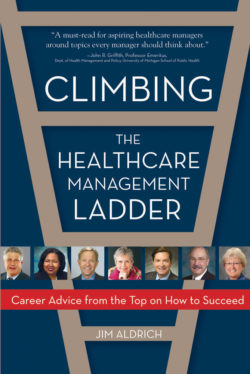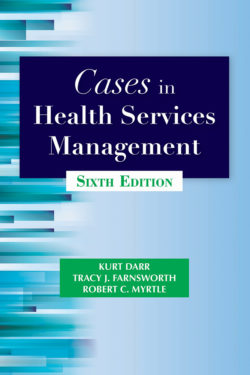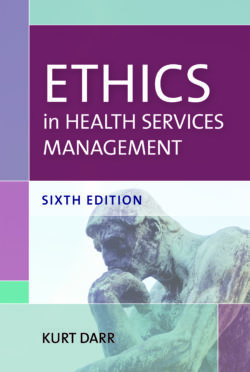Product Description
View a complete crosswalk of changes from the sixth and seventh editions! (Includes text, tables, and figures.)
Managing Health Services Organizations and Systems has served the educational and professional needs of the healthcare field over four decades. The seventh edition furthers that legacy in a completely revised and reorganized text that presents a comprehensive range of the knowledge and skills needed to effectively lead and manage health services delivery.
The first of three parts describes the environment in which health services are delivered. The second details tools and skills needed to manage and lead health services. The final part links the preceding chapters to Fayol’s five management functions—planning, organizing, staffing, directing, and controlling—as they apply in health services.
In this edition, the authors return to basics in a concise yet substantive presentation within a context of quality and performance improvement. New to this edition are chapters on healthcare economics, financial management, planning, organizing, staffing, and directing. A new section on compliance is key to meeting regulatory demands. The sections on patient and staff safety, emergency preparedness, and project management are updated and revised. Additional highlights include
- Revised and supplemented end-of-chapter discussion questions
- 52 thought-provoking case studies, 28 new to this edition
- Extensive source citations, many with URLs leading to additional sources for reading and research
- List of acronyms
- Detailed index
- Supporting instructor materials, including 58 additional case studies
Managing Health Services Organizations and Systems is a vital resource for developing health services leaders and managers. It is
- A textbook for graduate and undergraduate courses in health services management
- A resource for nonformal education such as seminars, webinars, and self-instruction
- An enduring professional reference with encyclopedic information. Busy practitioners will value the readily available acronym list, detailed index, and regulatory and statutory references.
Faculty adopting this text will find exceptional support in the accompanying instructor materials. These include learning objectives, supplemental case studies, discussion questions and answers, PowerPoint presentations, and test banks for each chapter. Also available are PDF files of figures and tables.


 Kurt Darr, JD, ScD, LFACHE, is Professor Emeritus of Hospital Administration, and of Health Services Management and Leadership, Department of Health Services Policy and Management, School of Public Health, The George Washington University.
Dr. Darr holds the Doctor of Science from The Johns Hopkins University and the Master of Hospital Administration and Juris Doctor from the University of Minnesota. His baccalaureate degree was awarded by Concordia College, Moorhead, MN.
Dr. Darr completed an administrative residency at the Rochester (MN) Methodist Hospital and subsequently worked as an administrative associate at the Mayo Clinic. After being commissioned in the U.S. Navy during the Vietnam War, he served in administrative and educational assignments at St. Albans Naval Hospital (NY) and Bethesda Naval Hospital (MD). He completed postdoctoral fellowships with the U.S. Department of Health and Human Services, the World Health Organization, and the Accrediting Commission on Education for Health Services Administration.
Dr. Darr is admitted to practice before the Supreme Court of the state of Minnesota and the Court of Appeals of the District of Columbia. He was a mediator for the Civil Division of the Superior Court of the District of Columbia and has served as a hearing officer for the American Arbitration Association. Dr. Darr is a member of hospital committees on quality improvement and on ethics in the District of Columbia metropolitan area. He is a Life Fellow of the American College of Healthcare Executives.
Dr. Darr’s teaching and research interests include health services management, administrative and clinical ethics, hospital organization and management, quality improvement, and applying the Deming method in health services. Dr. Darr is the editor and author of numerous books, articles, and cases used for graduate education and professional development in health services.
Kurt Darr, JD, ScD, LFACHE, is Professor Emeritus of Hospital Administration, and of Health Services Management and Leadership, Department of Health Services Policy and Management, School of Public Health, The George Washington University.
Dr. Darr holds the Doctor of Science from The Johns Hopkins University and the Master of Hospital Administration and Juris Doctor from the University of Minnesota. His baccalaureate degree was awarded by Concordia College, Moorhead, MN.
Dr. Darr completed an administrative residency at the Rochester (MN) Methodist Hospital and subsequently worked as an administrative associate at the Mayo Clinic. After being commissioned in the U.S. Navy during the Vietnam War, he served in administrative and educational assignments at St. Albans Naval Hospital (NY) and Bethesda Naval Hospital (MD). He completed postdoctoral fellowships with the U.S. Department of Health and Human Services, the World Health Organization, and the Accrediting Commission on Education for Health Services Administration.
Dr. Darr is admitted to practice before the Supreme Court of the state of Minnesota and the Court of Appeals of the District of Columbia. He was a mediator for the Civil Division of the Superior Court of the District of Columbia and has served as a hearing officer for the American Arbitration Association. Dr. Darr is a member of hospital committees on quality improvement and on ethics in the District of Columbia metropolitan area. He is a Life Fellow of the American College of Healthcare Executives.
Dr. Darr’s teaching and research interests include health services management, administrative and clinical ethics, hospital organization and management, quality improvement, and applying the Deming method in health services. Dr. Darr is the editor and author of numerous books, articles, and cases used for graduate education and professional development in health services.




HPP Admin –
“As a resident PGY-1 this book gave me the tools and confidence to not only manage myself but also manage multidisciplinary teams. It explains almost all factors to consider when entering the world of healthcare management in a simple yet efficient manner. I will be referencing this book now and in the years to come.”
-Mitchel Cruz, D.O., Oklahoma State University FM Resident, PGY-1, OSU Center for Health Sciences